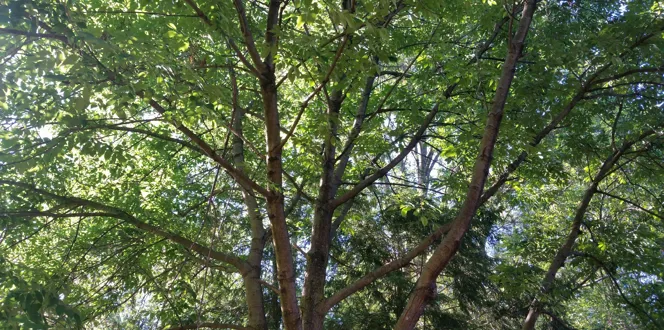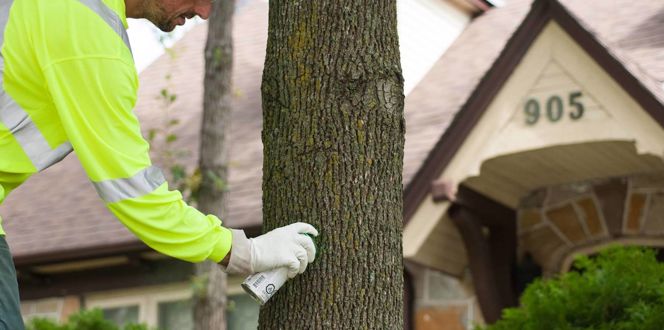The emerald ash borer: it’s a small pest with a big appetite.
For nearly two decades, this tiny terror has destroyed hundreds of millions of ash trees across the country. And unfortunately, the pest isn’t slowing down. When EAB first appeared in the U.S. in 2002, Michigan was the only state affected. Fast forward to today, and EAB infestations have been confirmed in a whopping 35 states.
If you live in or near an area threatened by EAB, it’s important to know the ins and outs of the insect. Below, read up on what EAB eats, what damage it causes and how it’s treated.
Does the emerald ash borer affect other trees?
In rare cases, EAB has been found on other trees, such as fringe trees, but EAB mostly feeds on ash trees. In its early stages, EAB tunnels into trees and feeds on the area just underneath tree bark. As adults, the pests eat ash tree leaves.
What trees are susceptible to emerald ash borer?
EAB gravitates towards really any ash tree—healthy or unhealthy, young or old! All ash trees are potential targets, even if EAB may prefer to lay eggs or feed on stressed trees. Read about how different ash trees are affected by EAB here.
How to identify emerald ash borer
While EAB symptoms are never a welcome sight, the fact that the insect’s damage is very distinct makes it easy to identify an infestation and take quick action to get your ash tree on a treatment plan.
In the video below, Jim Zwack, vice president, and general manager of the Davey Institute describes how to tell if you have an ash tree and how to spot EAB damage.
How to treat emerald ash borer
Once it’s confirmed that your ash tree has been infested by EAB, there are two next steps. First, a professional arborist can inspect your tree to make sure it’s a good candidate for treatment. In some cases, when a tree has been severely damaged, it might be too late to treat for emerald ash borer. But, with early detection, it’s possible to protect your trees from the pest.
From there, your arborist will decide on a treatment approach, including the best type of treatment (there are four to choose from) and the ideal timing for applications. When it’s done right, emerald ash borer treatment does work.





